Have problems with this impedance guy? Hope this short take clears up a bit.
What the hell is this Impedance thingie?
Aha! As you esteemed readers know, I get lots of mails every day! Other than body part enlargement, performance inducing drugs and requests for assistance to siphon off money from deceased millionaires, I get all sorts of queries on almost all things audio. (And also emails from angry wives complaining about their husbands expressing their love for Charlize and Monica in their sleep…)
Though I’m flattered by the high esteem you regard me, I can’t possibly know a lot more than the next guy. You see, other than having high-profile sweeties like Monica and Charlize as “my gals”, I’m just a regular guy, with an expanding waistline, receding hairline and shrinking bank acount balance. However, of the most oft requests, I began to realize that one of the most confusing and misunderstood electrical terms is Impedance. Now you would think that you want to ignore this and don’t want to get too technical but our beloved hobby doesn’t allow us this luxury. If you know nothing about impedance, then your visit to a hifi shop is akin to a newbie driver buying his first car. You are ripe for the taking! And you don’t even realize this!
However to simplify matters, I’ll keep eveyrthing as simple as possible, with a minimum of maths. (Also because I’m really bad at maths!) As I know nought, I’ll just talk about what I know of input/output impedance and power supply impedance with regards to our sonics.
Input and output impedance
When talking about input impedance of something, always think about output impedance of the previous stage as they are both critical parts of a circuit. Say, output impedance of a DAC vs input impedance of a preamp or output impedance of a preamp vs input impedance of a power amp.
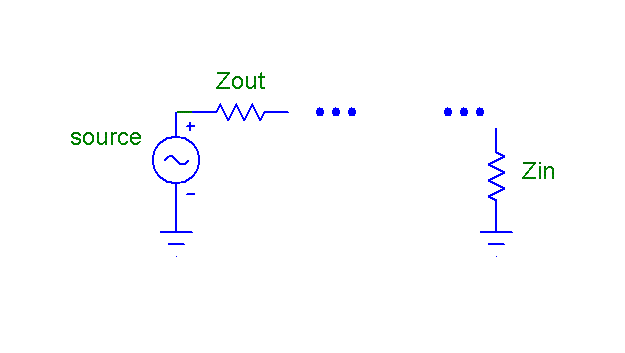
As I’m tired of typing impedance 30 times here, let’s just call it Z, which is also how engineering textbooks symbolize impedance. (Electronically inclined folks will be impressed when you start talking about Z though I don’t know why you would want to talk to them since most of them are nerds anyway.)
Now look at above circuit. Zout is the output impedance of say a DAC and Zin is the input impedance of the subsequent stage, say a preamp. The dotted line could be an interconnect. I just meant to say “a connection” which could be just wires, interconnect cables or whatever. In another scenario, Zout could also be output impedance of your preamp and Zin the input impedance of your power amp. Signal seen by load (meaning your subsequent stage) is given by this convenient equation. Signal * Zin/(Zin+Zout). In other words, the fraction of the signal seen is governed by a ratio involving Zin and Zout. Yes! the fraction and not the 100% complete signal.
So, say Zin is many times larger than Zout, then the signal seen is almost all of the signal. But if Zin is not larger than Zout by much, then we have a problem. There will be much signal loss here. To make matters worse, Z is kind of frequency dependent and such a problem is audible! Say you built a tube preamp with an output impedance of 10kohm. When driving a 50kohm load, that’s a terrible Z ratio of 1/6! This combo will be weak in bass. Got no rhythm, brudder. And I heard such a case before!
I would say in order to avoid such signal loss, it’s best to have at least a Z ratio of 1/50. Gross simplification of this: Think of it as 1kohm output impedance driving a 50kohm load.
Power supply impedance
An ideal power supply can put out all the current we need while maintaining the voltage. In order to do this, it must have zero or very low power supply Z. Consider the circuit below.
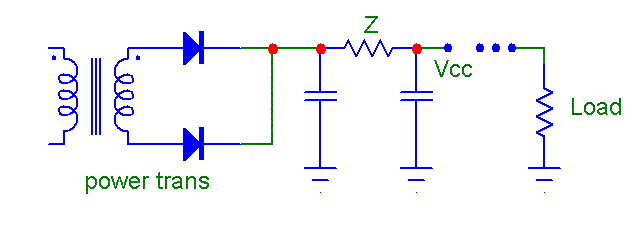
Say the above supply gives me Vcc of 5v and Z is 1000ohms. When the load draws 1microamp, I get a little less tham 5v. I get 4.999V. Negligible loss. Voltage drop is 1000ohms*1uamp, equals 0.001V.
However, things start to go wrong very quickly when I want 1ma. Now we’ll get 5V-1ma*1kohm which is 4v. I already lost 20% of my power supply voltage and this is at only 1ma! What a lousy supply!
However, if power supply Z is 0.1ohm, then you’ll lose 20% only at 10amps. This is a lot better! In other words, Z should be as low as possible.
Okay, okay the above is another gross simplification as power supply caps can alleviate the problem but it still is a BIG problem, irrespective of any boutique part.
So when designing a power supply, Z has to be considered with respect to the current drawn. If you draw low current, you can get away with high Z but as you draw more juice, then Z better be low!
Tube rects have higher Z than solid state rects. Thus tube amps with tube rect does not have bass as good as the same amp built with solid state rect. This is because bass signals draw more current from the supply. Of course, unless the designer designed this into account. However with tube rect’s higher Z, it has another benefit, the ability to reject higher freq switching noise. Thus using tube rects you get smooother mids and highs.
Personally I can’t stand muddy bass as it could easily cloud your mids. My preference will be to use either a lower Z tube rect (like TV damper diodes) or go solid state rect with tuned chokes and use wider bandwidth power supply caps like polypropylene or oil caps.
There you go! A short take on this subject. So at least please consider Z next time you work on all things audio.
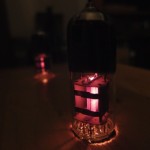
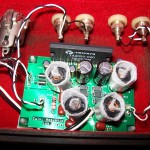
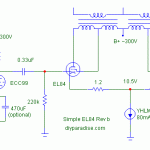
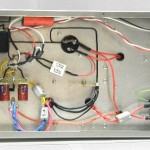



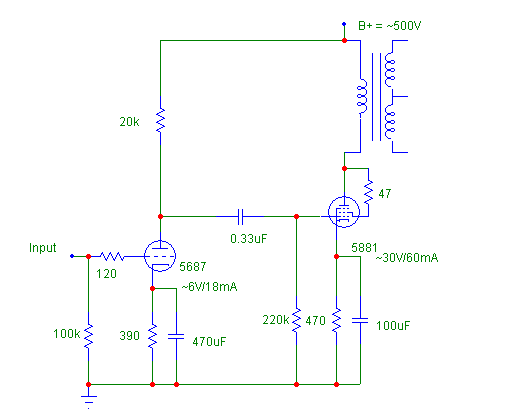
Thank u very much , that was very usful information
Thanks! That’s the best explanation of this complicated subject I have ever read.